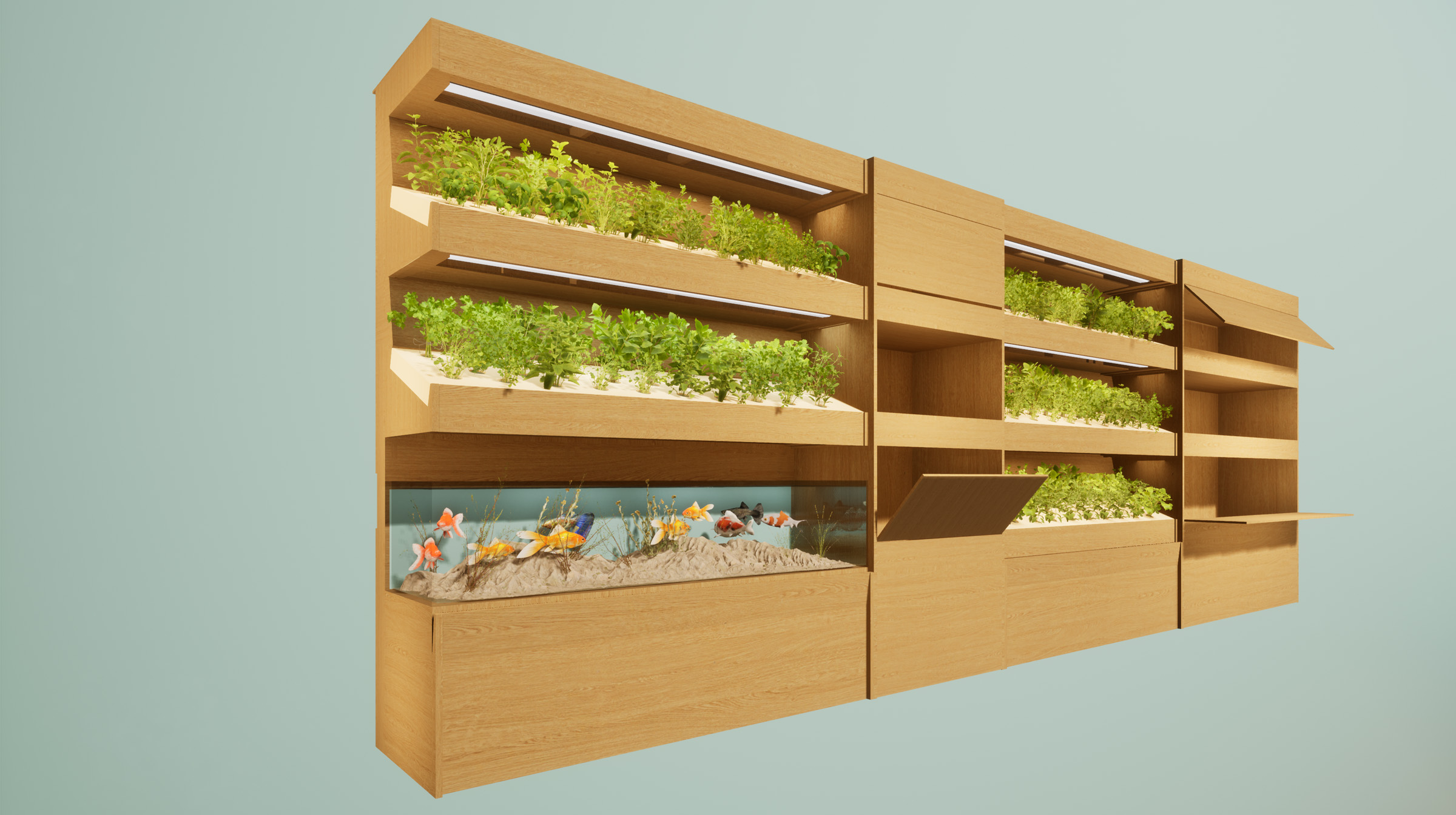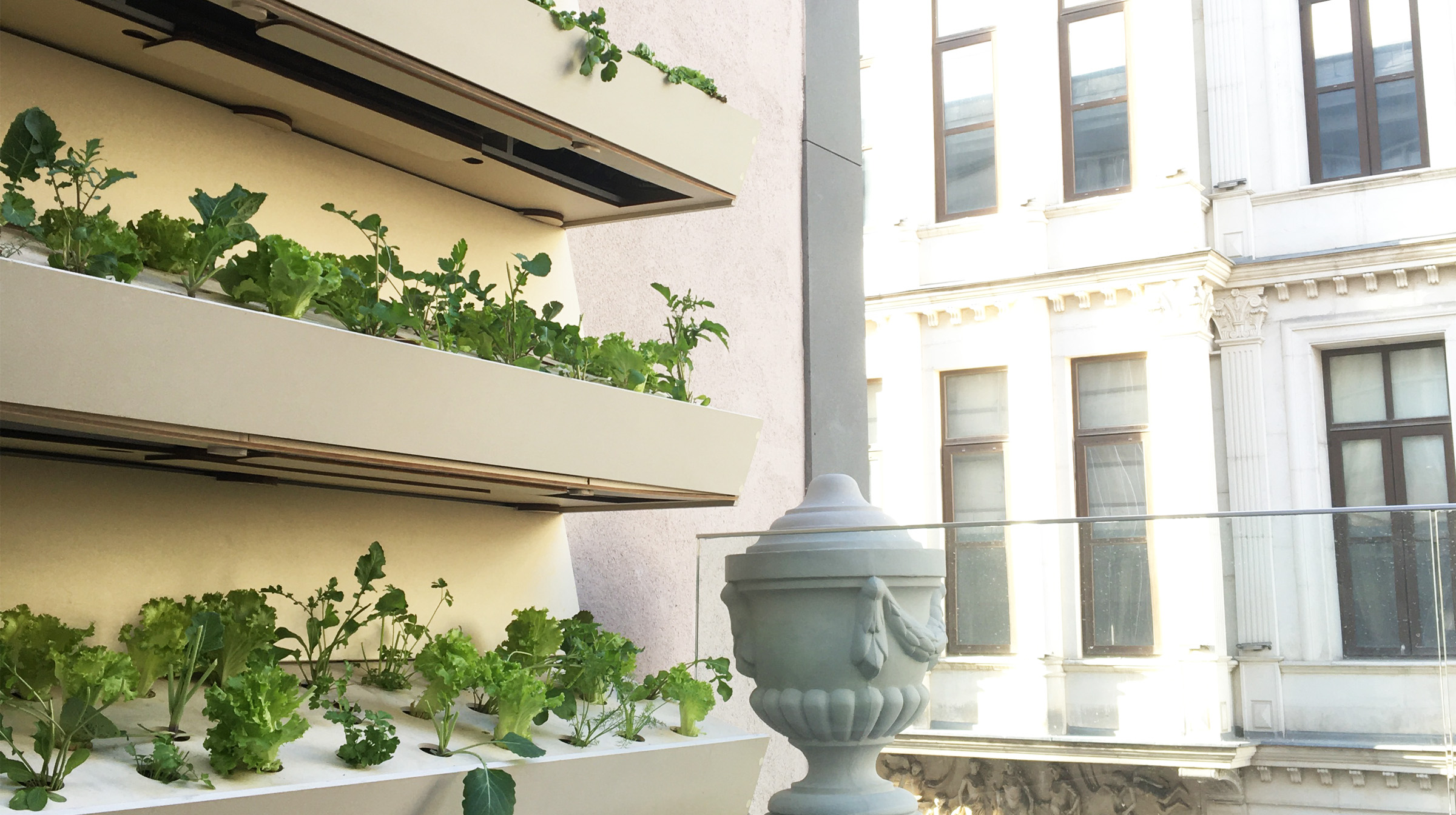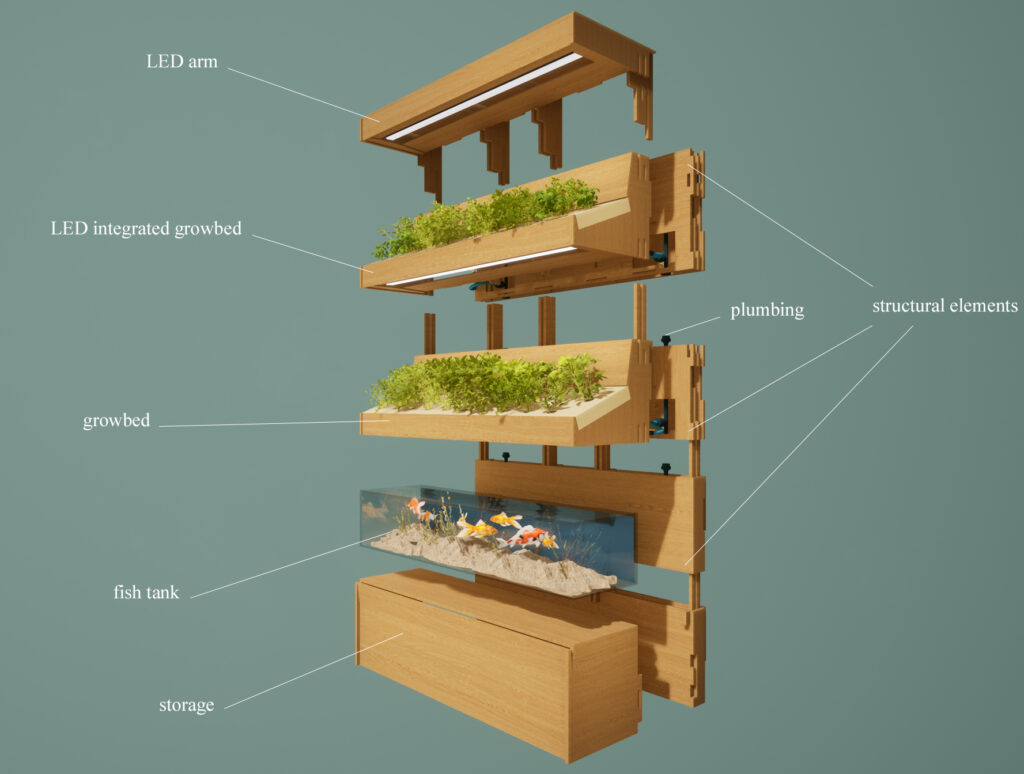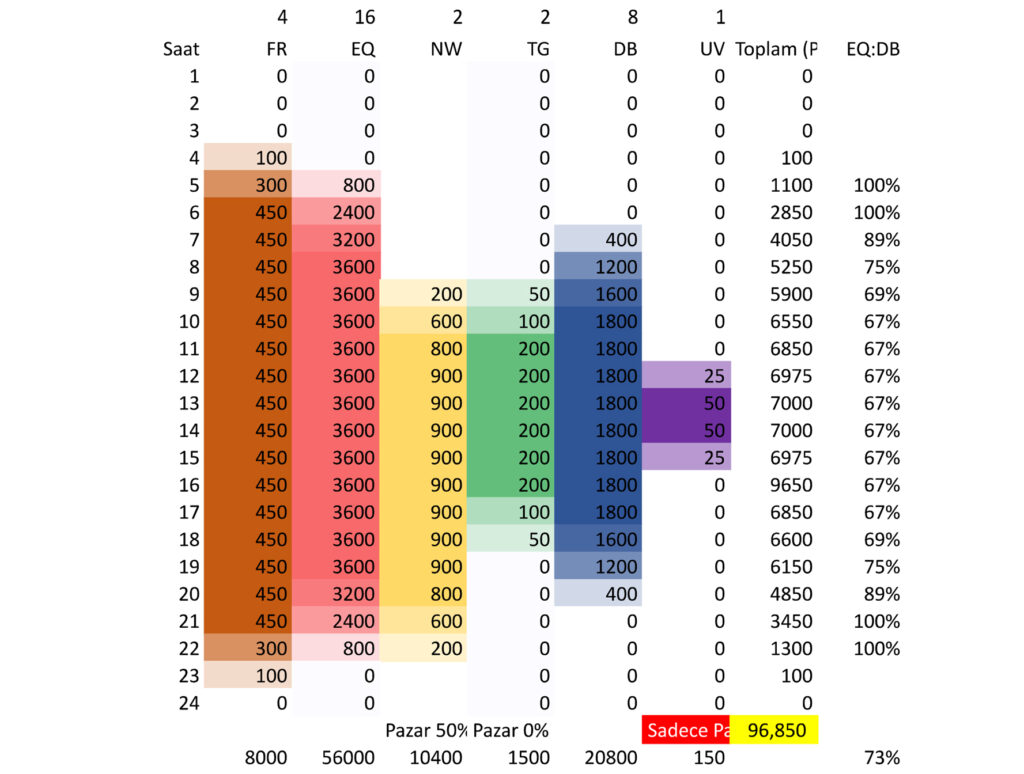
Our goal is to grow our food where we live–not in a factory in the city, but where we actually spend time, i.e. at home, in the office, or at a restaurant. We want to be able to smell the plants, touch their leaves, watch them grow. We believe the surest way to reducing food waste is to see how much time and effort it takes for a plant to go from seed to seedling, and then to full size until it is ready for harvest.
When we think of food as something that we buy at the grocery store for a nominal price, maybe we don’t value it enough… We are designing systems that we hope will set food free from being valued just by its price. Because what we grow and eat is worth so much more…
The systems we are developing are meant to allow us/humans to become an integral part of the food production cycle. We want to design products that are purposeful, visually attractive, and easy-to-maintain so that they can be comfortably placed in shared workspaces, school hallways, hotel lobbies, subway walkways, and also in our living spaces at home. In our flagship product yü(ZEN) Bostan, four quite dissimilar species–fish, nitrifying bacteria, plants, and humans coexist in a symbiotic relationship.
Growbeds
The system is fully modular: It can be expanded vertically by stacking growbeds on top of each other, and horizontally by placing multiple units side-by side. Each bed has place for 30 plants, which means that in an area of few m2, it is possible to grow hundreds of plants.
The growbeds are CNC cut using a fully recyclable composite material called Pluswood that is produced in Southern Turkey. Pluswood is hygienic and easy to clean. It offers carpentry possibilities similar to plywood, but is waterproof, which make it also appropriate for outdoor applications.
One of our main areas of research has been on the (sun-)light that plants need for healthy growth; The wavelengths used for photosynthesis have been known for over a century; But not much more is well-understood about how plants use information embedded in sunlight to regulate their physiological processes or their responses to environmental conditions; Practically all growlights currently in use in agriculture function on an on-off basis; Lights with red and blue wavelengths are kept on typically 18 to 20 hours, and off the remaining time of the day; This may work fine for photosynthesis that results in production of body mass; But does this provide the plants the ideal conditions for healthy growth?; The sun, of course, doesn’t simply come full on in the morning, and turn off at night; Changes in the quality and intensity of the sunlight during the course of the day and over different seasons surely inform the plants to adjust their behavior; At EK BİÇ YE İÇ, we have spent significant effort in trying to develop the technology to mimic the sunlight as closely as possible; We currently partner with a local growlight producer that provides us with dimmable LEDs, where we can control different wavelength bands individually; This allows us to create the intensity of light as well as combination of wavelengths that represent sunrise, mid-day sun, and sunset; The transitions are not sudden changes that could put plants under stress, but smooth shifts that give plants time to adjust–similar to what happens in nature; We have reason to believe that plants don’t only react to the environmental conditions at any moment, but also to the rate and direction of change; Hence, the information content of our lighting system is core to our goal of providing comfortable places in the city for nature to thrive.
Growbeds have integrated LED lights on the bottom , can be free-standing or wall-mounted, and comes with indoor and outdoor versions.
It is also possible to grow freshwater fish and crustaceans in the aquaponic version of the system for harvesting if that becomes necessary.
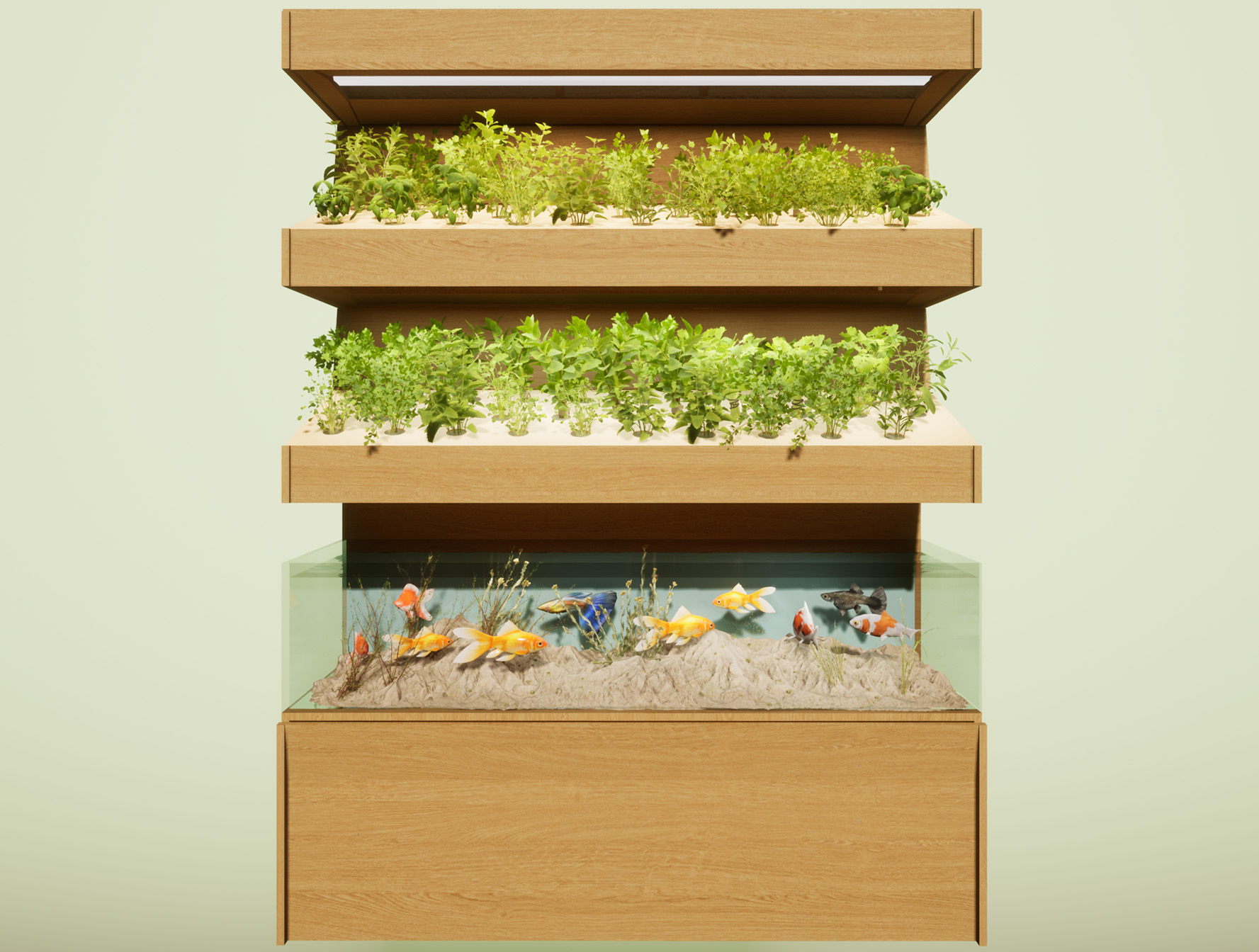
İç Mekan
2 Bitki Rafı
Y/G/D: 218cm/163 cm/65cm
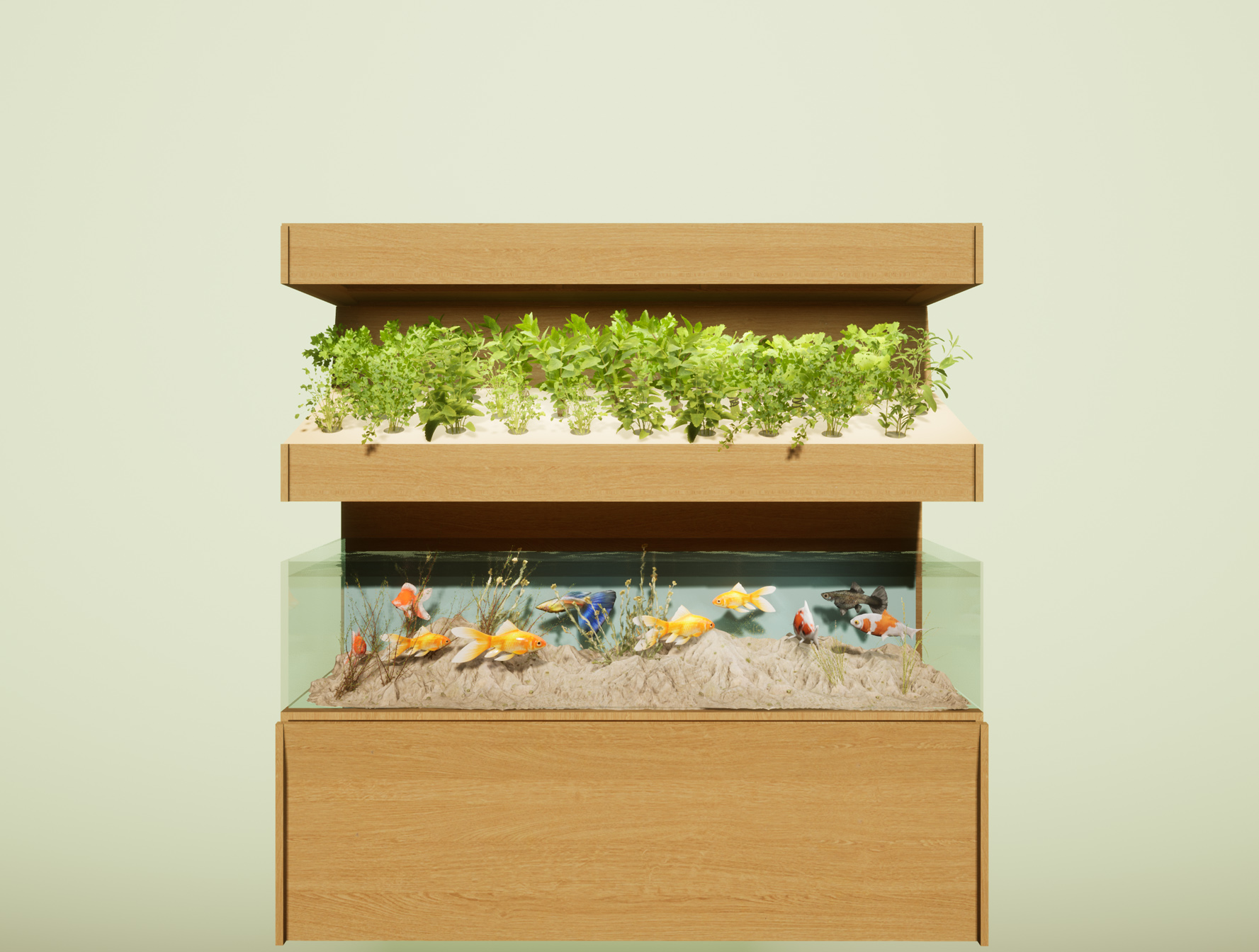
İç Mekan
1 Bitki Rafı
Y/G/D: 166cm/163 cm/65cm
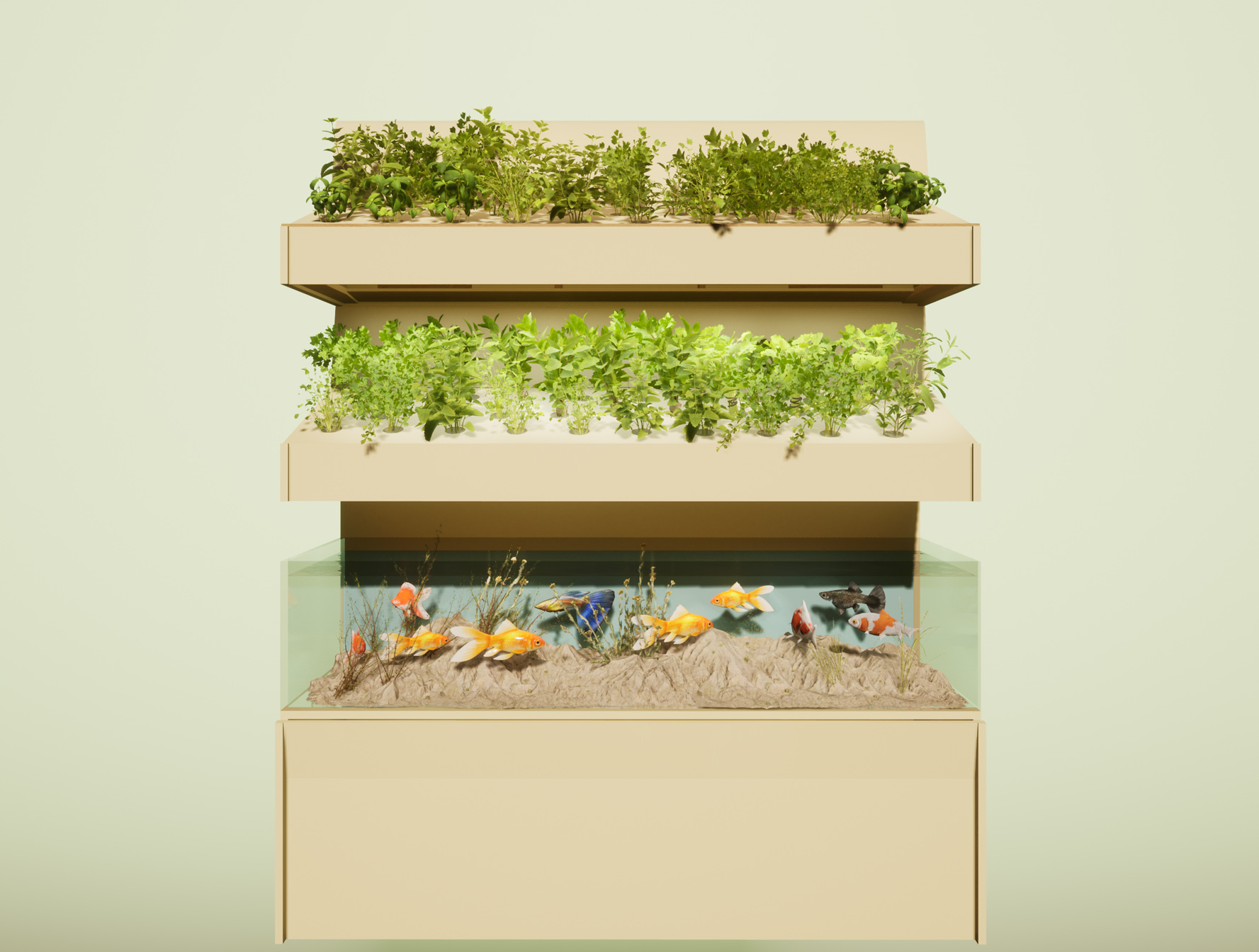
Dış Mekan
2 Bitki Rafı
Y/G/D: 204cm/163 cm/65cm
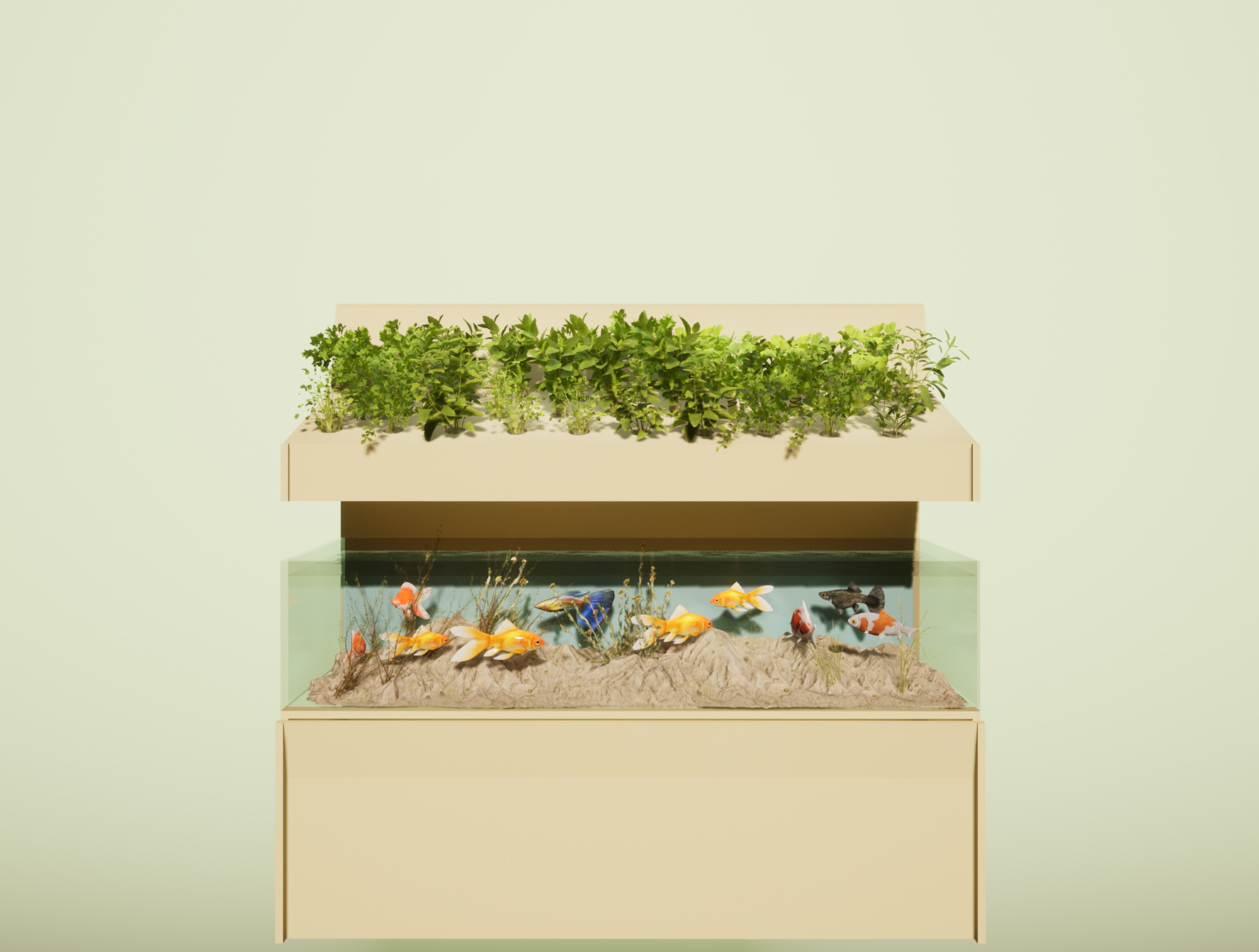
Dış Mekan
1 Bitki Rafı
Y/G/D: 153cm/163 cm/65cm
Production System: Aquaponic
Dimensions: 163 cm (width), 65 cm (depth), 218 cm (height)
place to be installed: indoor
Number of LEDs: 2
Material: plywood
Production System: Aquaponic
Dimensions: 163 cm (width), 65 cm (depth), 166 cm (height)
place to be installed: indoor
Number of LEDs: 1
Material: plywood
Production System: Aquaponic
Dimensions: 163 cm (width), 65 cm (depth), 204 cm (height)
place to be installed: outdoor
Number of LEDs: 1
Material: pluswood
Production System: Aquaponic
Dimensions: 163 cm (width), 65 cm (depth), 153 cm (height)
location: outdoor
Number of LEDs: o
Material: pluswood

İç Mekan
3 Bitki Rafı
Y/G/D: 218cm/163 cm/65cm

İç Mekan
2 Bitki Rafı
Y/G/D: 166cm/163 cm/65cm
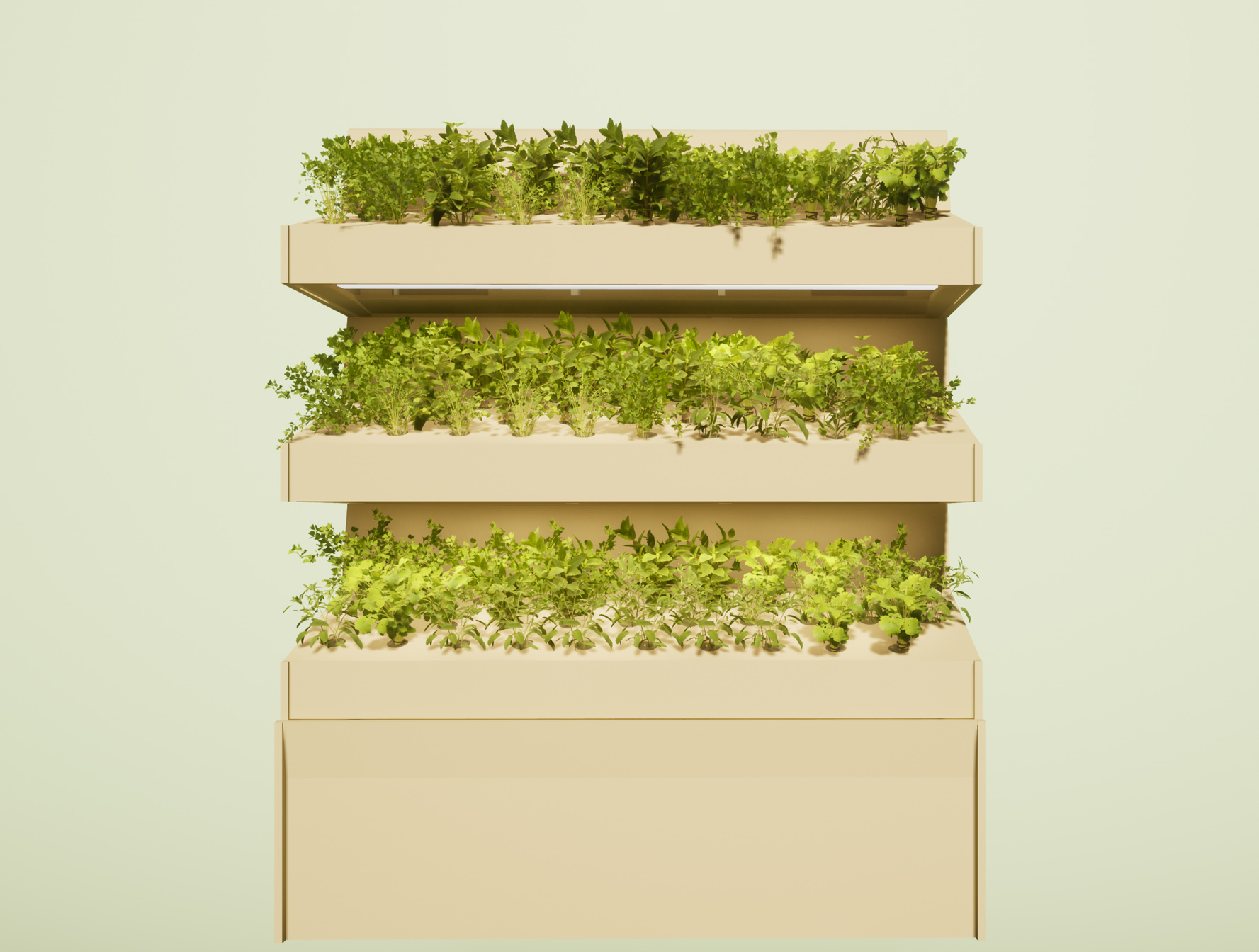
Dış Mekan
3 Bitki Rafı
Y/G/D: 204cm/163 cm/65cm
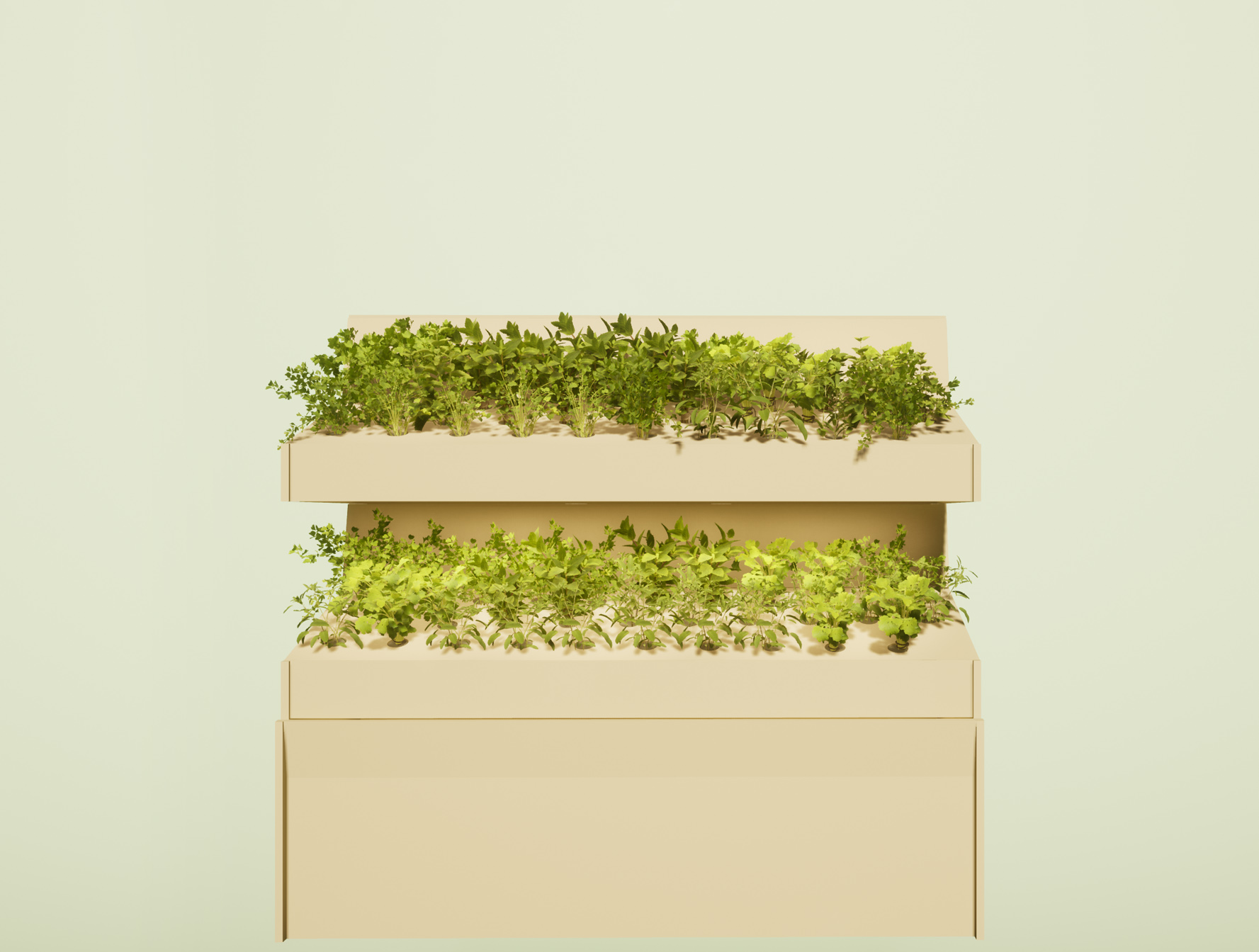
Dış Mekan
2 Bitki Rafı
Y/G/D: 153cm/163 cm/65cm
Production System: Hydroponic
Dimensions: 163 cm (width), 65 cm (depth), 218 cm (height)
location: indoor
Number of LEDs: 3
Material: plywood
Production System: Hydroponic
Dimensions: 163 cm (width), 65 cm (depth), 166 cm (height)
location: indoor
Number of LEDs: 2
Material: plywood
Production System: Hydroponic
Dimensions: 163 cm (width), 65 cm (depth), 204 cm (height)
location: outdoor
Number of LEDs: 2
Material: pluswood
Production System: Hydroponic
Dimensions: 163 cm (width), 65 cm (depth), 153 cm (height)
location: outdoor
Number of LEDs: 1
Material: pluswood
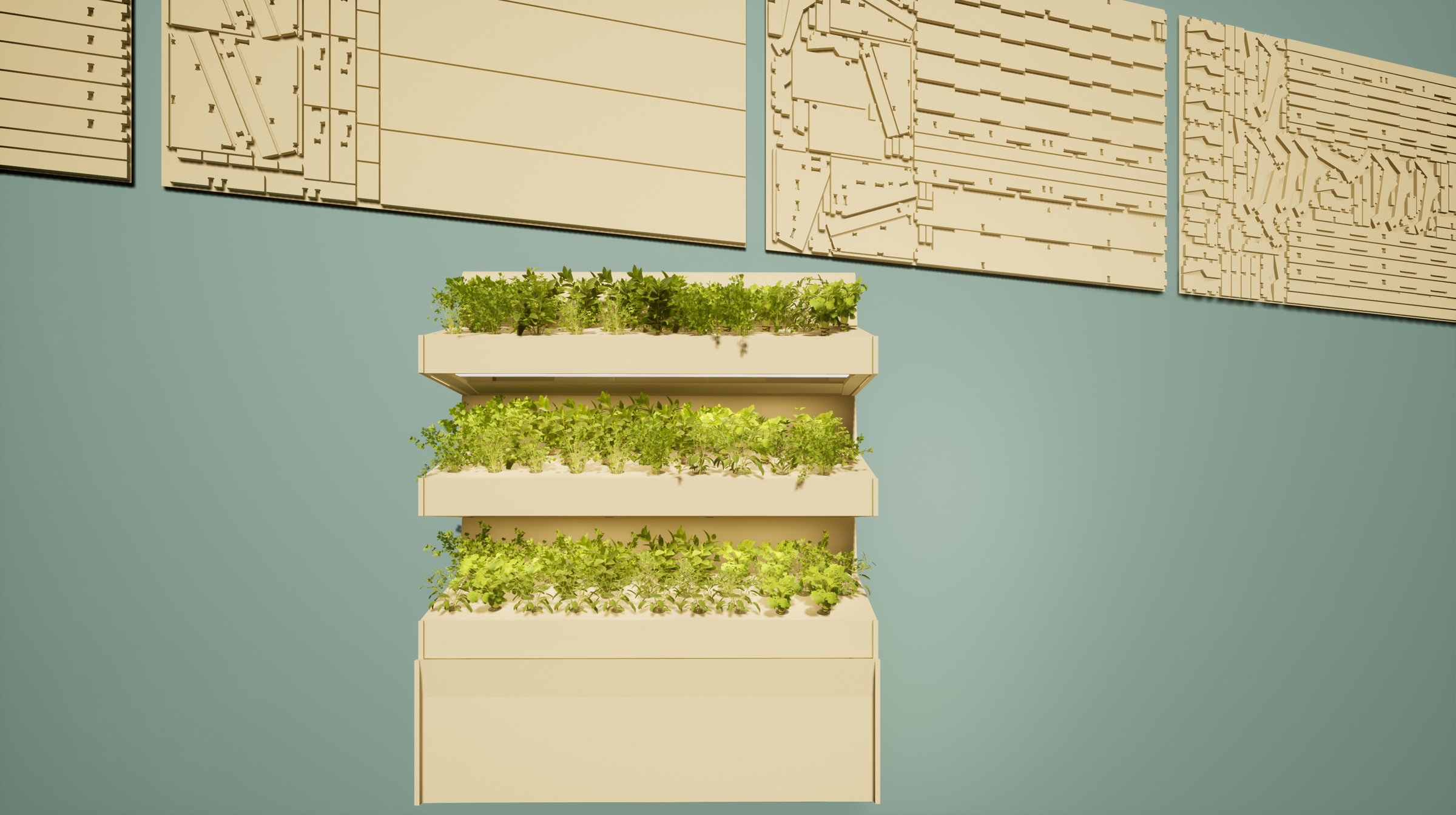
Design Your System with Three Questions!
Should the plant production system be Aquaponic or Hydroponic? In an aquaponic system, there is an aquarium in addition to the growing beds. In a hydroponic system, the water, nutrient, and oxygen cycle is provided from a water tank.
For indoors or outdoors? We produce systems to be placed indoors with plywood and those placed outdoors with recyclable, moisture-resistant composite panels. In addition, depending on how much sunlight the outdoor location receives, we can save on system costs and energy expenses by not using LED on the top level of the system.
How many levels of growing beds should the system have? For the hydroponic system, it is possible to design it with two or three growing beds, each with a capacity of 30 plants, while for the aquaponic system, since there is an aquarium on the lower level, it is possible to design it with one or two growing beds.
